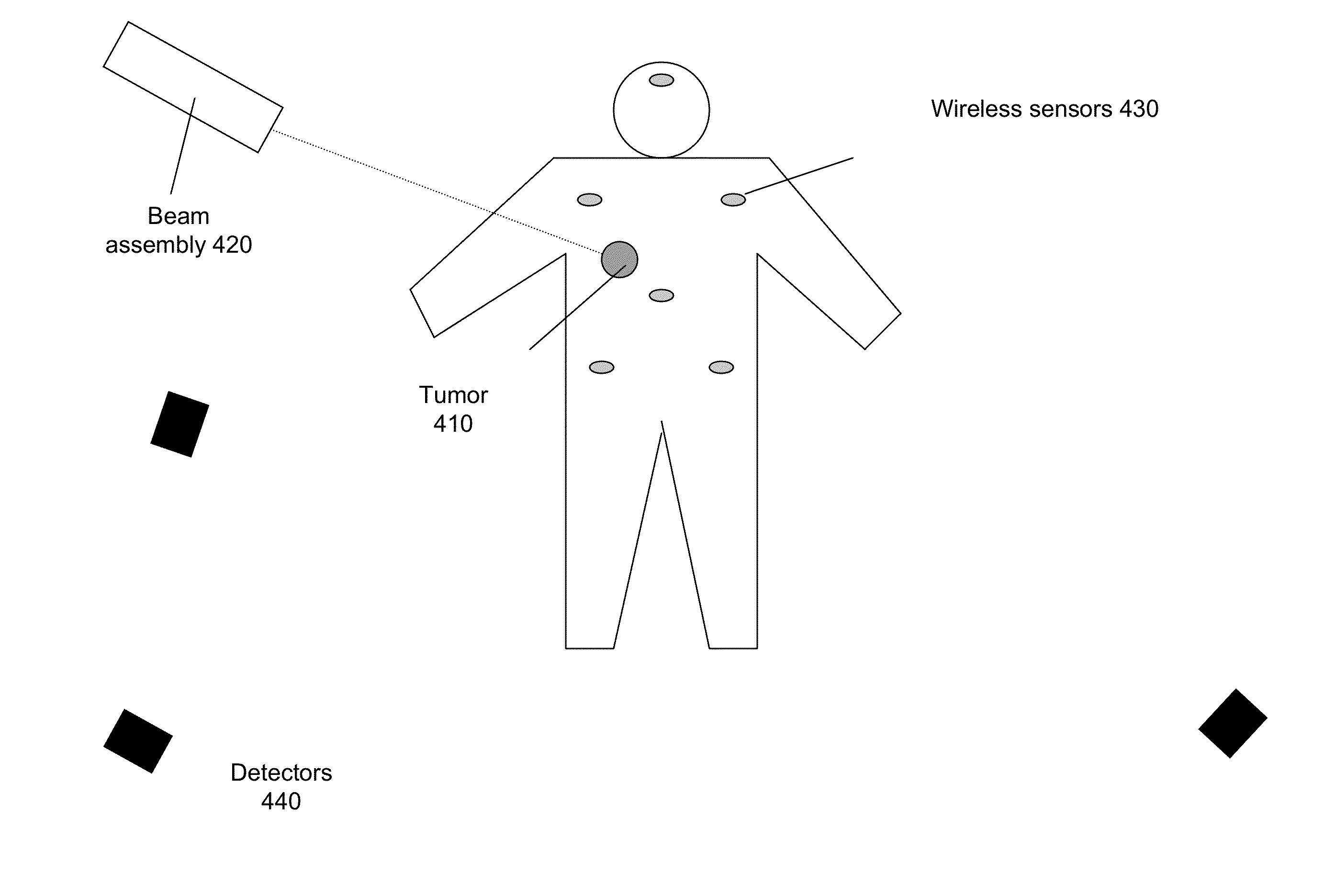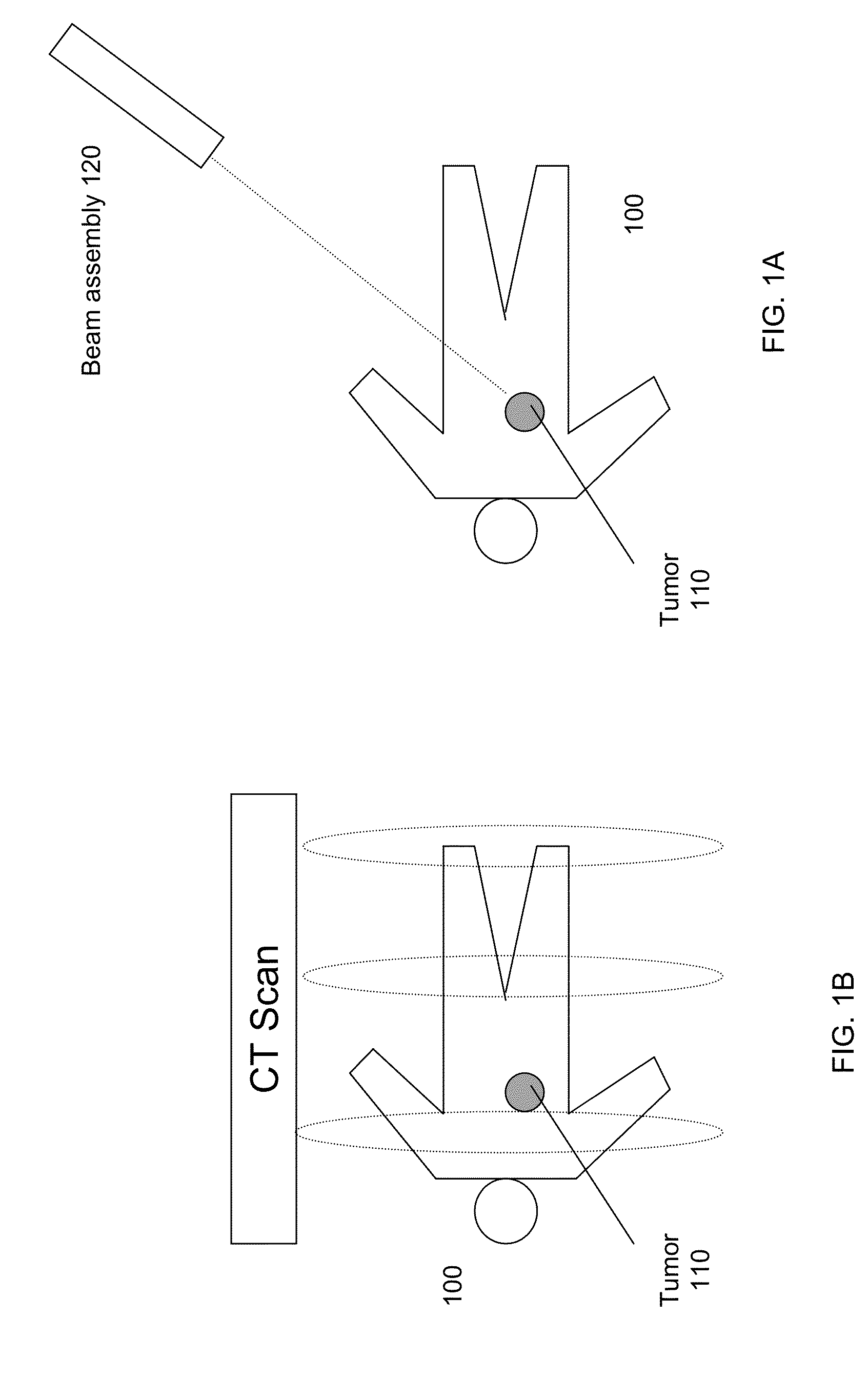Tracking of tumor location for targeted radiation treatment
- Summary
- Abstract
- Description
- Claims
- Application Information
AI Technical Summary
Benefits of technology
Problems solved by technology
Method used
Image
Examples
Embodiment Construction
I. Introduction
[0029]FIG. 1 shows a diagram of a patient 100 undergoing radiation beam treatment according to embodiments of the present invention. The patient 100 is shown as laying down on his / her back, but other body positions and orientations are allowed. A beam assembly 120 is shown in a particular orientation to provide a radiation beam 130 that is focused on a tumor 110 inside patient 100. Beam assembly 120 can be connected to a movement mechanism that allows beam assembly 120 to be moved. For example, beam assembly 120 can be part of a robotic mechanism that sits on a floor of a room, is attached to a wall, or hangs from a ceiling.
[0030]In one embodiment, beam assembly 120 may be moved during treatment so that healthy tissue is not irradiated for too long. For example, if the beam always had the same trajectory, the tissue above the tumor 110 would continuously be exposed to radiation. If the beam assembly moved while staying focused, the same healthy tissue would not be con...
PUM
 Login to View More
Login to View More Abstract
Description
Claims
Application Information
 Login to View More
Login to View More - R&D
- Intellectual Property
- Life Sciences
- Materials
- Tech Scout
- Unparalleled Data Quality
- Higher Quality Content
- 60% Fewer Hallucinations
Browse by: Latest US Patents, China's latest patents, Technical Efficacy Thesaurus, Application Domain, Technology Topic, Popular Technical Reports.
© 2025 PatSnap. All rights reserved.Legal|Privacy policy|Modern Slavery Act Transparency Statement|Sitemap|About US| Contact US: help@patsnap.com



